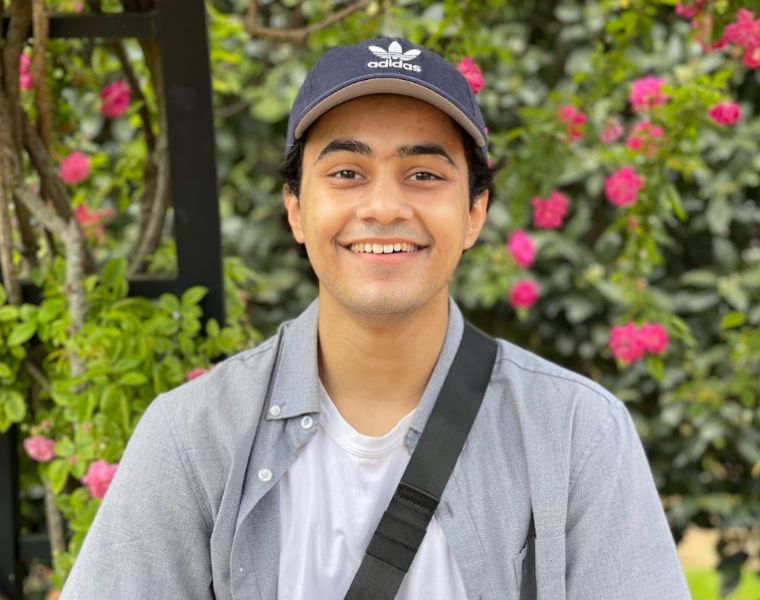Usman Moazzam started his undergraduate education in Washington state but soon realized the university didn’t have an avenue for him to combine his interests in healthcare, math and computing.
That’s when he made what he calls “one of the best decisions I’ve ever made for myself” and transferred to Case Western Reserve University where he was able to do just that.
“At CWRU, I knew I’d be given the opportunity to explore my interests more and nestle myself in the confluence of my passions without having to compromise on any of them,” said Moazzam.
Now a fifth-year undergraduate majoring in computer science with a specialization in software engineering, Moazzam is set to graduate later this month and will soon begin his professional career as a software engineer at Microsoft. He also plans to continue his education with a master’s degree in computer science—though he’s undecided on where.
“No matter which university I join for grad school, it will be hard to beat my experience at CWRU,” he said.
As he looks ahead to commencement, we spoke with Moazzam to learn more about his time at Case Western Reserve.
Answers have been lightly edited for length and clarity.
1. What inspired you to pursue a degree in computer science?
Funny enough, I didn’t really connect with computer science when I was first exposed to it in high school AP computer science. I was more interested in the health sciences at the time, and intended to one day become a physician. Two years into studying pre-health sciences at the University of Washington, I realized there was a significant need for computing in healthcare and became interested in filling that need. I found this in my research at Fred Hutchinson Cancer Research Center in Seattle, where I helped develop a machine-learning pipeline to predict patient stroke outcomes based on patient ECG readings and biodata. I also experienced this in my academics when I ideated and designed a mobile application to connect Seattle’s uninsured population with affordable healthcare resources.
2. Why did you want to integrate your studies in computing with health?
Applying computing to the health sciences has improved healthcare outcomes by providing better diagnosis, treatment and monitoring of patients, giving healthcare professionals insights into patient data that could lead to more accurate diagnoses and personalized treatment plans. The integration of health sciences and computer science has also led to new opportunities for research, particularly in areas such as genomics, epidemiology and medical imaging. Ultimately, I knew that the intersection of the health and computing sciences was the greatest opportunity for me to make an impact and help improve the lives of others.
3. Ultimately, what is your goal in those two fields?
While I have a number of goals for the next five to 10 years, my future in the fields I am passionate about seems pretty limitless. Currently, my plan is to gain experience in the tech industry and further fortify my knowledge by pursuing graduate school in parallel. Beyond establishing myself in the field, I also just hope to help people and give back to my community, and I believe that computer science and the health sciences are the best avenues for me to do so.
4. What was it like transferring during COVID?
Transferring during the pandemic was definitely a challenging experience. I knew that catching up to my peers who were two years ahead of me in computer science would require a quick and steep ramp, which would only be more difficult at the apex of the pandemic in a new university and town.
I also was going into my third year of college without study groups, prior relationships with professors, nor an insightful understanding of my course of study. However, the discomfort helped me grow as a person and I worked harder to get better integrated into the CWRU community.
5. What has been your most inspirational or exciting class?
My favorite class so far has been USNA 289T: Community Problem Solving with Dr. Kurt Rhoads. The focus of this class was to learn about and evaluate “design thinking,” a systematic process for developing creative, human-centered solutions.
Throughout the class, I got the rare opportunity to challenge my own methods of problem solving and apply a new technique to solving an issue in the Cleveland community. As a project for the course, I prototyped a software-hardware tool that would help parents and teachers learn more about how to address the issue of lead toxicity plaguing many Cleveland homes and schools, giving them the tools to determine if their homes were at risk and how to address it.
6. Are you involved on campus in any way?
Yes! I am a member of the Case Salsa Club’s general body, as well their On1, On2, and Shines performance teams. I am also a member of both the Muslim Student Association and the Pakistani Student Association, as well as the Spartan Running Club and Climbing Club.
Going to their events such as salsa lessons, cultural dinners, and running practices was a valuable experience as they provided a platform for me to connect with other students who share similar backgrounds, cultures and passions. Aside from clubs, I also worked as a teaching assistant for CSDS 233: Data Structures.

